What is MVAS? MVAS stands for Mobile Value Added Services.
How it works in baby steps:
- You see something cool you want, like a daily tip, game, or horoscope.
- You put in your phone number.
- They send you a code (OTP, over the phone) to make sure it’s really you.
- You enter the code, and BOOM, you’re subscribed.
- The cost gets added to your phone bill (or taken from your prepaid balance). No credit card needed.
Examples of MVAS:
- Daily health tips sent to your phone.
- Horoscopes every morning.
- Football score updates during games.
- Mini mobile games without downloading an app.
- Language learning tips via SMS.
- Prayer or festival reminders in your local language.
Think of MVAS as the extra features that make your mobile experience richer. From SMS alerts to mobile banking, they covers a wide range of services. These services cater to diverse user needs and preferences.
The significance of MVAS is growing rapidly. With increasing smartphone penetration, the demand for mobile content is on the rise. Businesses are leveraging them to engage customers and boost sales.
For e-commerce businesses, they offer personalized promotions and enhances customer loyalty. Digital marketing managers use them for targeted advertising and improved customer insights. Affiliate marketers find them beneficial for promoting mobile-specific offers.
Understanding MVAS is essential for anyone in the digital marketing space. It offers opportunities to innovate and stay competitive. This guide will explore them in detail, providing insights and examples.
Understanding MVAS: Definition and Evolution
MVAS, or mobile value-added services, have revolutionized how we use mobile devices. These services offer enhanced functionality beyond standard voice calls and texts. Their evolution reflects the changing landscape of mobile technology and user demands.
In essence, MVAS refers to supplementary services provided by mobile operators that boost user experience. They are designed to enrich the customer’s interaction with their device. Initially, such services included basic SMS notifications and caller tunes. Over time, however, they have expanded to include an array of sophisticated features.
Today, MVAS encompasses a wide variety of applications. This includes mobile banking, entertainment services, and location-based offerings. As technology advanced, so did the potential for MVAS innovation. Integrating advancements like AI and machine learning has further personalized these offerings.
Key Characteristics of MVAS:
- Enhanced User Engagement: Offers personalized and interactive content.
- Revenue Generation: Provides additional income streams for providers.
- Diversified Offerings: Covers entertainment, m-commerce, and more.
The evolution of MVAS can be attributed to several factors. Improved mobile connectivity, particularly the rise of smartphones, played a crucial role. Increasing user demands for convenience and instant access also drove advancements. Additionally, partnerships between telecom operators and third-party providers have accelerated growth.
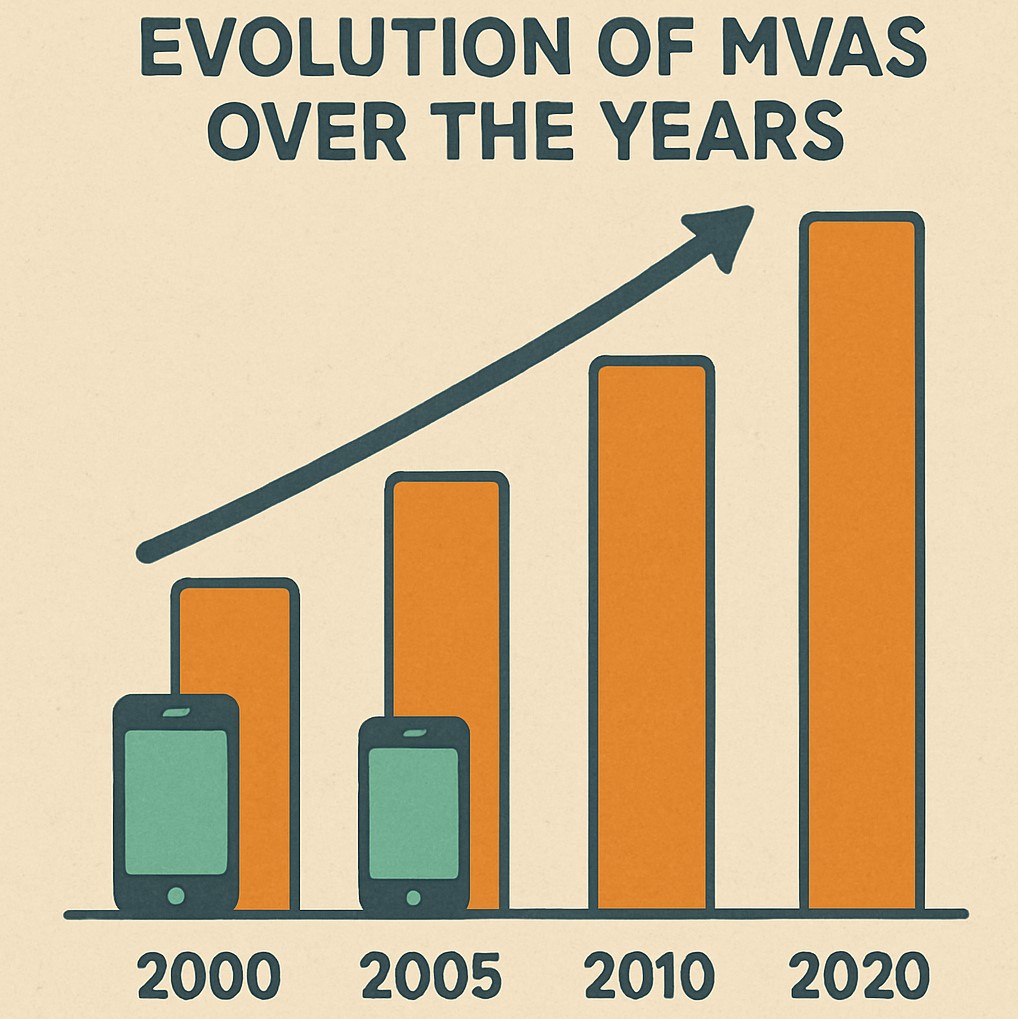
The history and development of MVAS indicate a trajectory of continuous innovation. This ongoing evolution suggests a future ripe with possibilities. Businesses are seizing these opportunities to enhance customer relationships and differentiate themselves in the crowded digital marketplace. Understanding the definition and evolution is essential to leveraging its full potential.
The Core Components of Mobile Value Added Services
At its foundation, mobile value-added services consist of several core components. These essential elements work together to deliver a seamless experience to users. Understanding these components is crucial for businesses seeking to implement effectively.
Firstly, content creation and delivery form the backbone. These services involve generating engaging and relevant content that captivates users. Whether it’s entertainment, news, or lifestyle tips, the content must be tailored to the audience.
Next, technology infrastructure supports the delivery of these services. This includes advanced network systems and platforms that ensure smooth service operation. Reliable infrastructure is vital for achieving optimal user satisfaction and performance.
Additionally, customer relationship management is a critical component. mobile value added services must focus on interacting with users and obtaining feedback. This helps in refining offerings and ensuring customer retention.
Core Components of MVAS:
- Content Creation: Developing relevant and engaging material.
- Technology Infrastructure: Maintaining robust networks and platforms.
- Customer Interaction: Building and maintaining user relationships.
Finally, the integration of payment systems allows for a streamlined user experience. These systems facilitate transactions and enhance the convenience of accessing paid services.
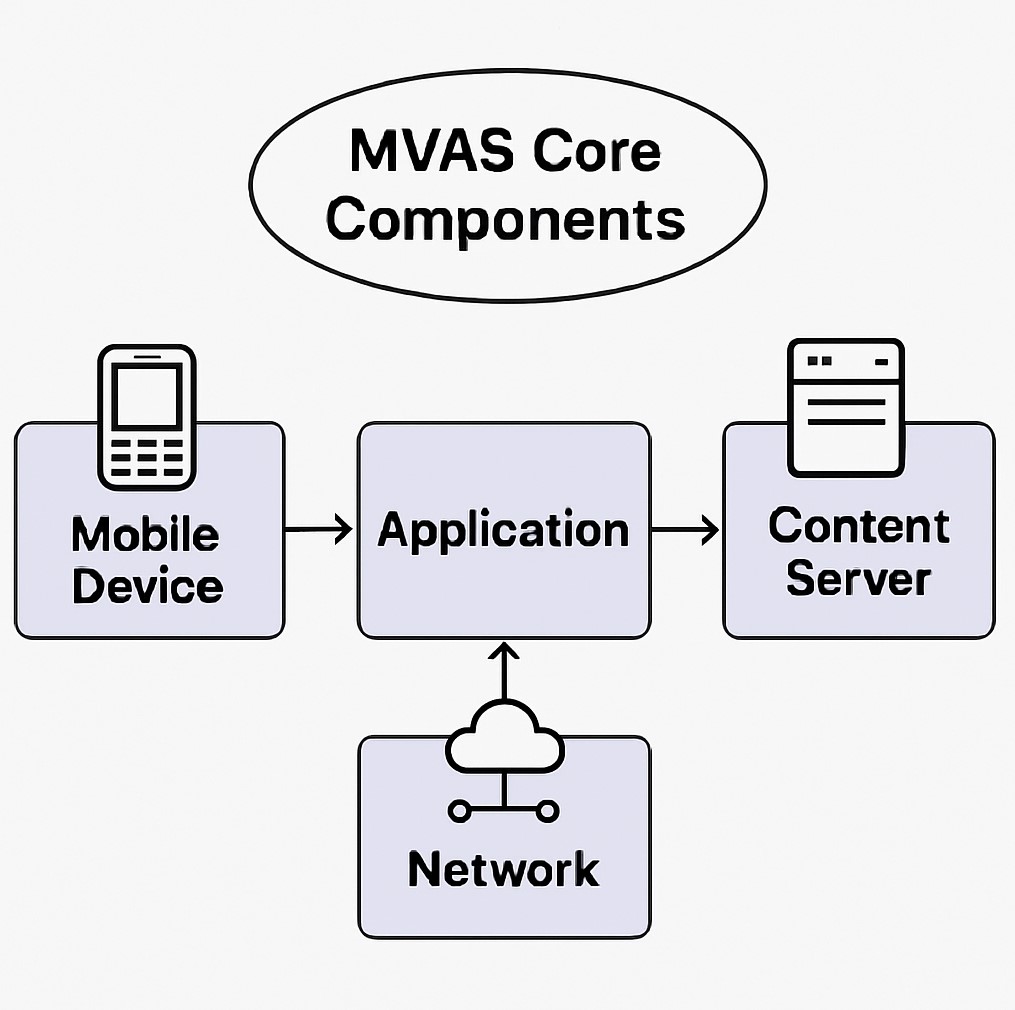
The successful operation relies on these interconnected components. Together, they create a harmonious ecosystem that meets user needs. When implemented effectively, these components enable businesses to deliver exceptional value and strengthen brand loyalty.
Mobile VAS Meaning: How It Differs from Core Mobile Services
Understanding the distinction between Mobile VAS and core mobile services is essential. Core mobile services encompass basic functions like voice calls and text messaging. These services form the foundation of mobile connectivity but offer limited user engagement.
In contrast, mobile value-added services elevate the mobile experience. They provide additional features that go beyond basic communication. They are designed to enhance user engagement and satisfaction through diverse offerings.
Key Differences:
- Core Services: Basic communication functions (calls, texts)
- MVAS: Enhanced features like entertainment and banking
- User Engagement: Mobile VAS focuses on user interaction and personalization
Mobile VAS includes features like mobile banking, entertainment, and location-based services. These services target users’ preferences and needs, providing more personalized experiences. By leveraging technology, they offer convenience and accessibility beyond standard services.
Businesses that adopt can differentiate themselves in competitive markets. By offering unique, value-added features, companies can increase customer loyalty. As they continues to evolve, its importance in the mobile ecosystem remains undeniable.
Types of Mobile Value Added Services
Mobile Value Added Services span across various categories, each offering distinct benefits. Understanding these categories helps businesses tailor their strategies to meet customer needs effectively.
Entertainment Services
Entertainment services are among the most popular Mobile VAS offerings. A lot of webmasters are making money online with their blog by utilizing MVAS. These include music streaming, video on demand, and gaming services. They cater to users’ leisure activities, providing immediate access to entertainment on mobile devices.
Information Services
Information-driven services deliver real-time updates and alerts. Examples include news updates, weather forecasts, and financial market data. These services ensure users stay informed wherever they are.
Communication Enhancement
Enhancing communication services is another core type. This category includes instant messaging apps and video conferencing tools. These innovations enhance connectivity beyond traditional voice calls and SMS.
M-Commerce Services
Mobile commerce (m-commerce) services facilitate transactions via mobile devices. They encompass mobile banking, online shopping, and digital payment solutions. These services make purchasing and financial management more convenient for users.
Infographic of MVAS Types
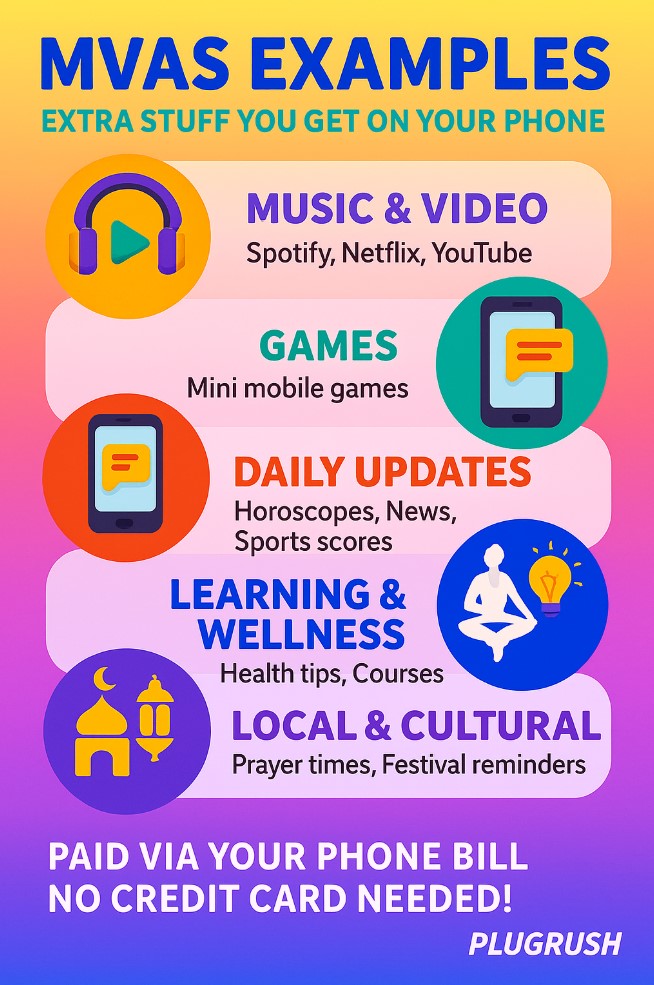
Personalization and Localization
Personalization services tailor content based on user preferences. Localization services provide location-specific information, such as nearby stores or restaurants. These services enhance user engagement by adding relevance. Vodafone in India is one of the largest mobile value added services companies in the world. Think of Verizon in USA but on steroids.
Education and E-Learning
Education services on mobile platforms support e-learning initiatives. They provide access to educational content, courses, and learning tools. These services increase learning opportunities, especially in remote areas.
Adopting a broad range can significantly boost a business’s engagement strategies. By incorporating a diverse array of services, businesses can meet various user demands. Thus, understanding and utilizing it can lead to enhanced customer satisfaction and loyalty.
Mobile Value Added Services Examples Across Industries
Mobile Value Added Services offer versatile solutions adaptable across various industries. They drive innovation and improve user engagement through tailored content and efficient communication.
Retail Industry
In retail, MVAS provide shoppers with personalized offers and loyalty programs. These services enhance the shopping experience through targeted promotions.
Infographic of MVAS in Retail
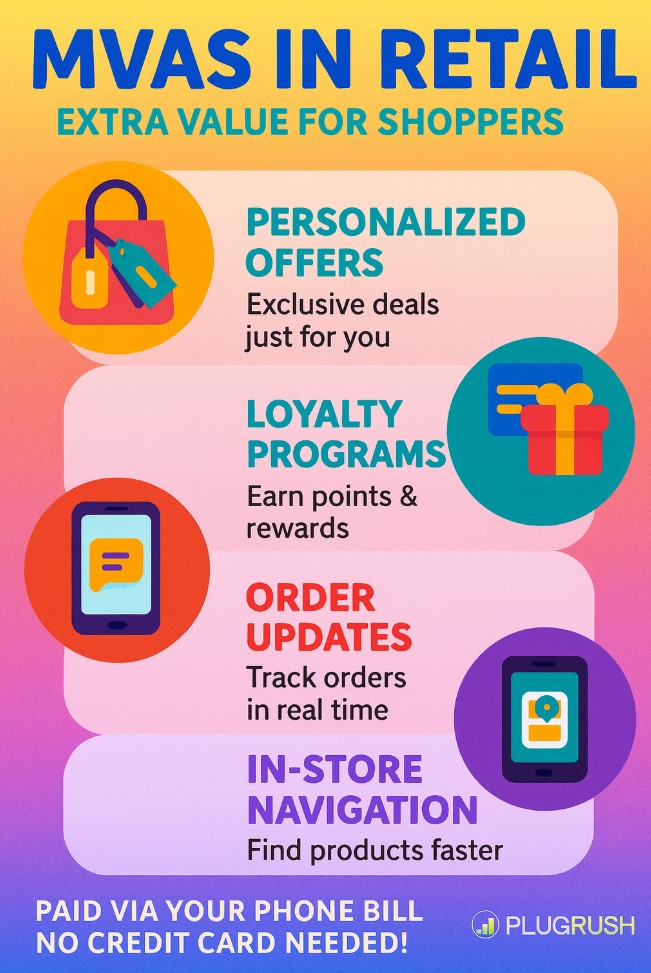
Healthcare Sector
Healthcare sectors utilize mobile value added services for scheduling appointments and sending medication reminders. Patients receive health tips and alerts, supporting better management of their wellness.
Examples in Healthcare:
- Telemedicine consultations
- Health monitoring and alerts
Financial Services
The financial industry benefits from Mobile VAS through mobile banking and payment alerts. Users enjoy real-time access to account information and secure transaction confirmations.
Travel and Hospitality
Travel and hospitality sectors leverage Mobile VAS to offer reservation confirmations and location-based recommendations. This helps enhance the travel experience with personalized suggestions.
Educational Institutions
Education sectors employ MVAS for online courses and exam alerts. These services support flexible learning, accommodating students’ varying schedules and locations.
Examples in Education:
- E-learning platforms
- Course notifications and updates
Visual of MVAS in Education
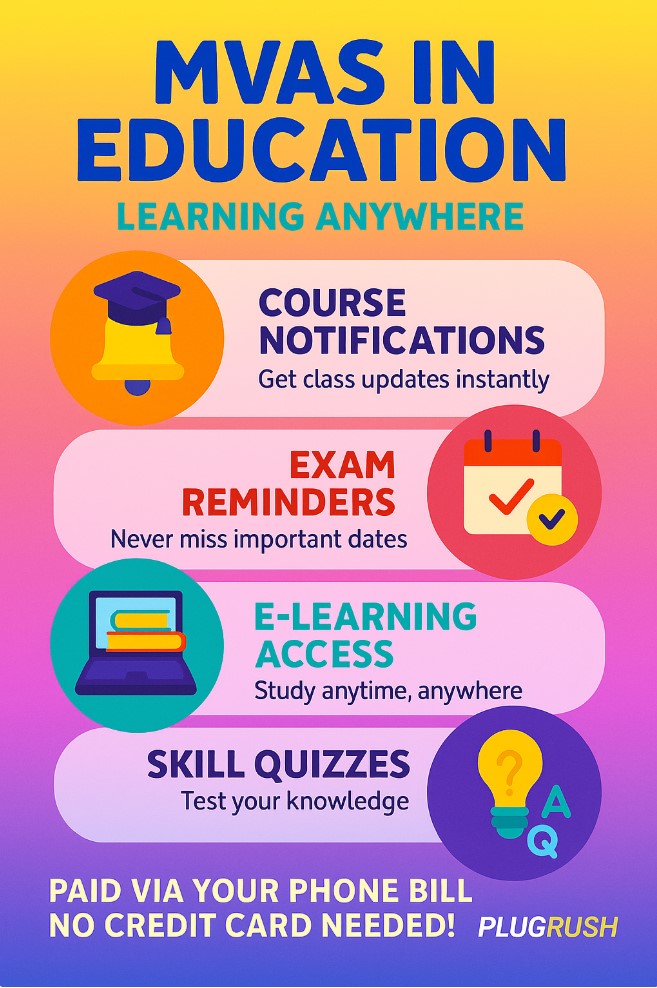
Media and Entertainment
Media companies use MVAS for streaming services and customized content suggestions. This keeps users engaged with a steady stream of entertainment tailored to their tastes.
These examples highlight the ability to cross industry boundaries and deliver valuable services. By integrating Mobile VAS, businesses can enhance customer engagement and provide personalized experiences. This not only boosts satisfaction but also helps maintain a competitive edge. Industries embracing them can create stronger connections with their audiences, driving long-term success.
How MVAS Works: Technology, Flows, and User Experience
Mobile Value Added Services blend technology and user-centric design to elevate user experiences. Understanding the process begins with appreciating the underlying technology and flows.
The Technology Behind Mobile Value Added Services
At the core of Mobile VAS are robust telecommunications infrastructure and application platforms. These technologies enable seamless service delivery, ensuring reliability and scalability.
Key Technologies Used:
- SMS Gateways: For messaging services
- Mobile Applications: For various services and functions
Service Flow and Integration
Mobile VAS operates through a series of interconnected steps. Initially, a service provider collaborates with telecom operators to design and implement services. Integration with customer data enables personalized experiences.
Service Flow Highlights:
- Service Request: Users initiate or subscribe to a service.
- Data Processing: User preferences and behaviors guide service delivery.
- Content Delivery: Users receive personalized content or updates.
Infographic Illustrating MVAS Flow
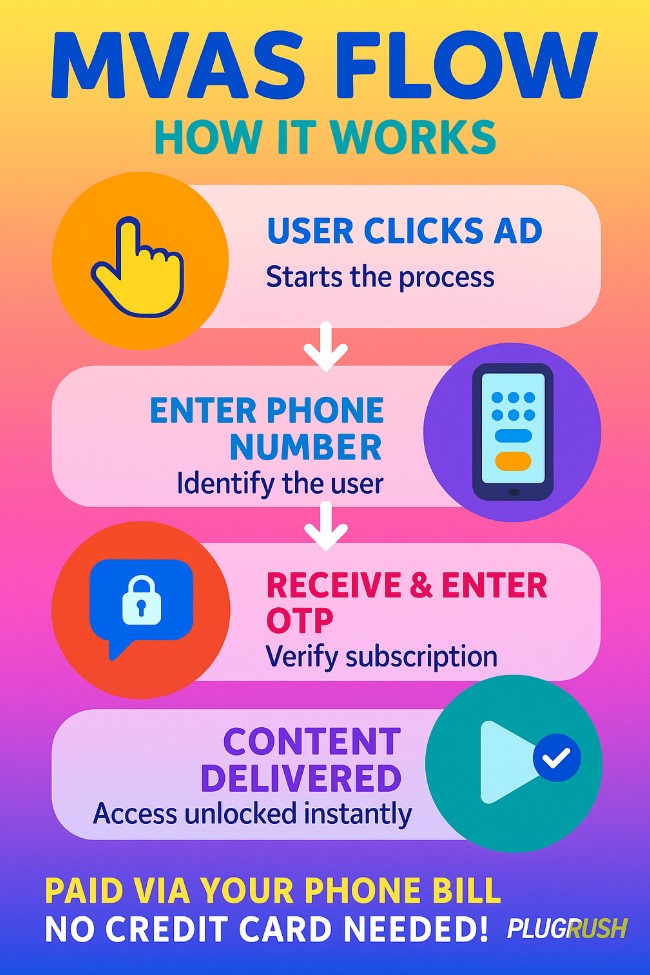
Enhancing User Experience
A well-crafted Mobile VAS enhances user satisfaction by providing relevant and timely services. These services cater to user preferences, increasing convenience and engagement.
User Feedback and Iteration
User feedback is crucial for refining offerings. Insights gained help providers make iterative improvements, ensuring services remain effective and user-friendly.
Visualizing User-Centric MVAS Design
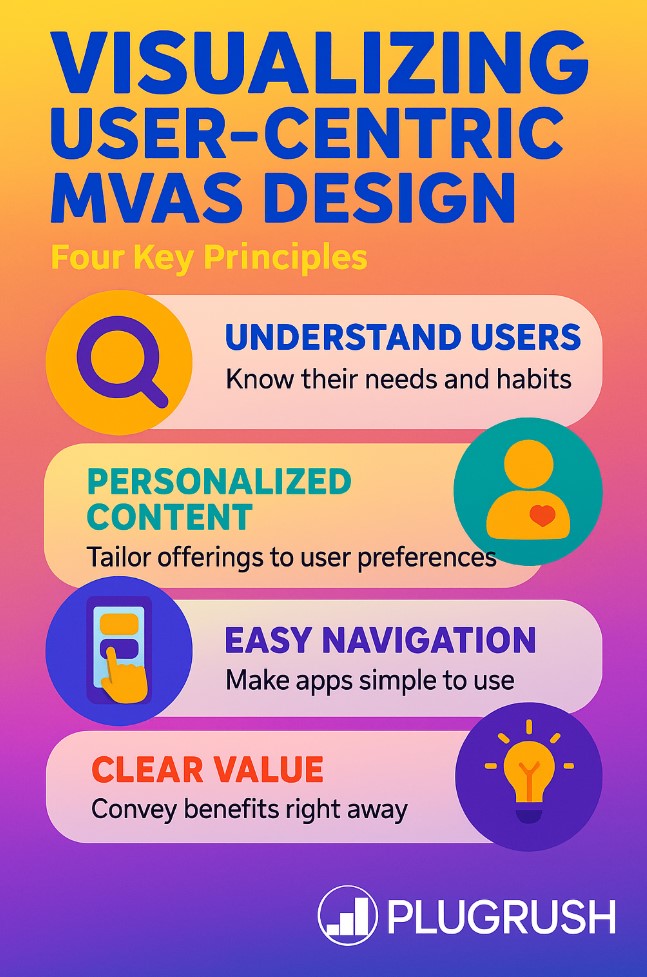
By harnessing advanced technology and thoughtful service flows, they deliver exceptional user experiences. The interplay of these elements fosters greater customer loyalty and opens up new opportunities for service providers. As user needs evolve, Mobile VAS adapts, leveraging feedback and innovations to stay relevant. This dynamic approach ensures that it continues to add value in a rapidly changing digital landscape.
MVAS in Digital Marketing and E-commerce
Mobile Value Added Services play a crucial role in digital marketing and e-commerce. They enable businesses to reach customers more effectively and create personalized experiences. When choosing to promote MVAS, it’s crucial that you choose the right ad network for high quality traffic.
Enhancing Customer Engagement
Mobile VAS offers tailored solutions to improve customer interaction. By leveraging data insights, brands can deliver relevant content to their audience, enhancing engagement and satisfaction.
Benefits for E-commerce
For e-commerce businesses, Mobile Value Added Services provides a platform to offer personalized promotions and discounts. These tailored offers can increase customer retention and drive sales.
Key Applications in E-commerce:
- Personalized Offers: Tailored discounts based on purchasing behavior
- Loyalty Programs: Reward customers for repeat purchases
- Instant Notifications: Real-time updates on deals and orders
Image Depicting MVAS Applications in E-commerce
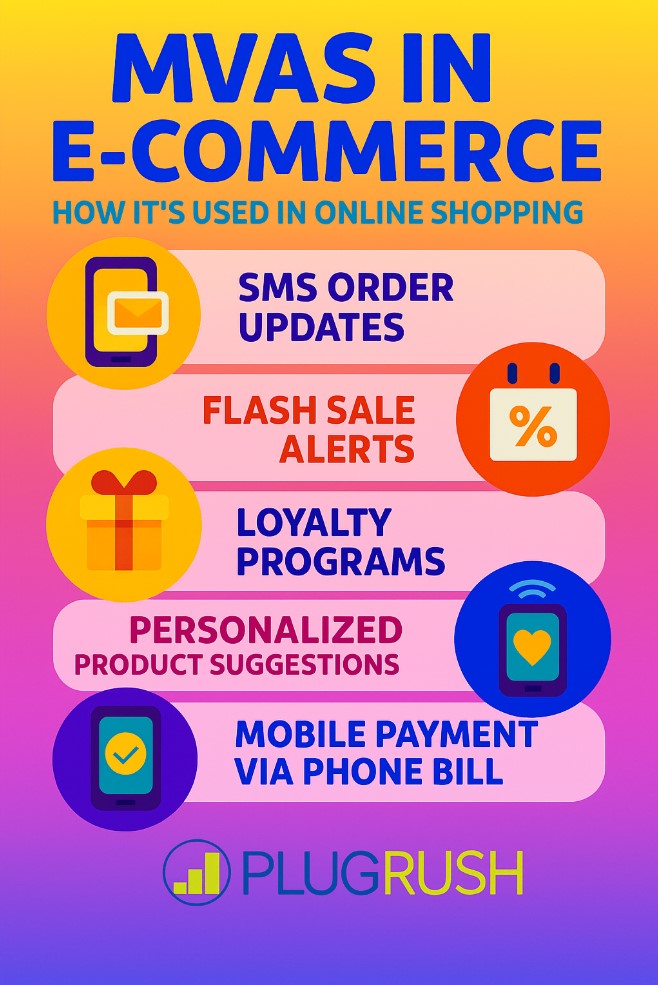
Data-Driven Strategies
With Mobile VAS, businesses can gather valuable customer data. These insights help refine marketing strategies, optimize product offerings, and improve customer service.
Integrating MVAS into Digital Marketing
Integrating MVAS into a digital marketing strategy involves more than using technology. It requires understanding customer preferences and behaviors to deliver impactful campaigns. By doing so, businesses can achieve higher conversion rates and stronger brand loyalty. As it continues to innovate, providing tools and solutions that adapt to the dynamic digital landscape. Utilizing these services effectively can give businesses a competitive edge, propelling them to new heights in the digital marketplace.
MVAS for Affiliate Marketers: Opportunities and Best Practices
For affiliate marketers, Mobile Value Added Services provide unique opportunities to increase revenue. These services enable more precise targeting and engagement with potential customers.
Expanding Reach and Engagement
With MVAS, affiliates can tap into a wider audience by promoting mobile-specific offers. This approach helps capture attention and boosts engagement metrics significantly.
Best Practices for Maximizing MVAS
To fully leverage MVAS, affiliate marketers should focus on strategic placements and platforms. Understanding user behavior is key to identifying the most effective promotional channels.
Important Strategies for Affiliates:
- Select Relevant Offers: Choose MVAS that align with your audience’s interests.
- Optimize Ad Placement: Utilize strategic positions to increase visibility.
- Continuous Monitoring: Regularly review performance metrics for adjustments.
Image Illustrating MVAS in Affiliate Marketing
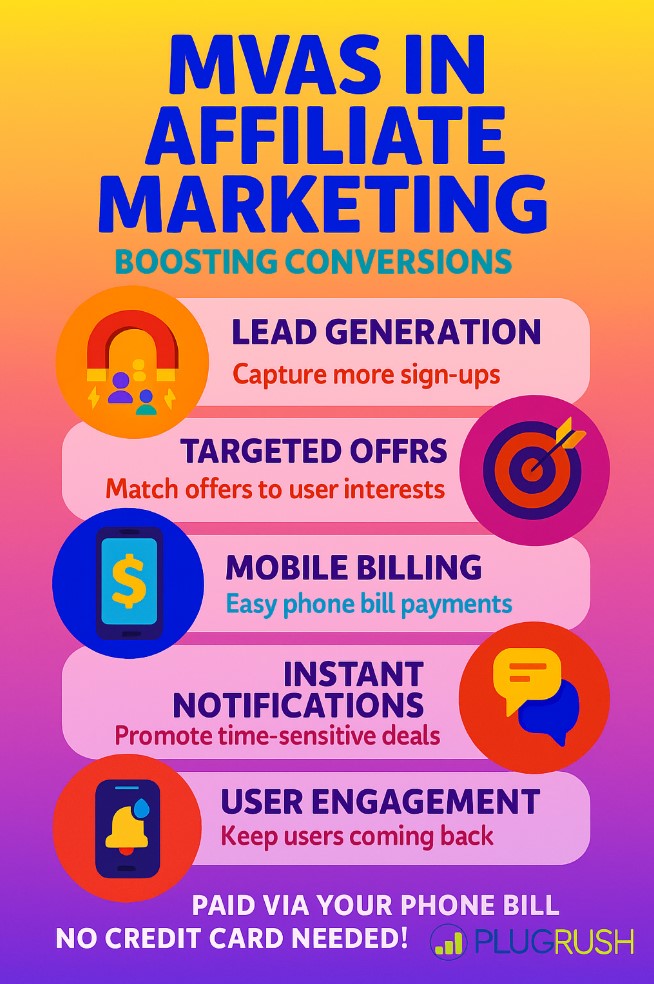
Boosting Conversion Rates
By integrating MVAS, affiliates can provide timely and personalized content. These tailored experiences increase the likelihood of converting visitors into buyers, thus enhancing affiliate earnings.
Building Long-term Partnerships
Partnering with reliable MVAS providers ensures access to high-quality services. These partnerships enable affiliate marketers to focus on what they do best: driving traffic and conversions while it provides the tools needed for enhanced success. Through collaboration and careful strategy, affiliate marketers can harness MVAS to unlock new revenue streams and elevate their marketing efforts.
Benefits of MVAS for Businesses and Users
Mobile Value Added Services offer a variety of advantages to both businesses and users. They bridge gaps in communication, enhance engagement, and provide seamless user experiences.
Enhancing Customer Engagement
For businesses, MVAS facilitate personalized interactions, improving customer satisfaction. They enable timely communications through mobile notifications, alerts, and targeted content.
Boosting Revenue Streams
Businesses can tap into new revenue channels through MVAS. These services often generate additional income beyond core offerings, thereby increasing overall profitability.
Key Benefits:
- Personalization: Tailor content to individual preferences.
- Convenience: Offer easy access to services on the go.
- Loyalty: Strengthen customer relationships through value-driven services.
Image Highlighting MVAS Benefits
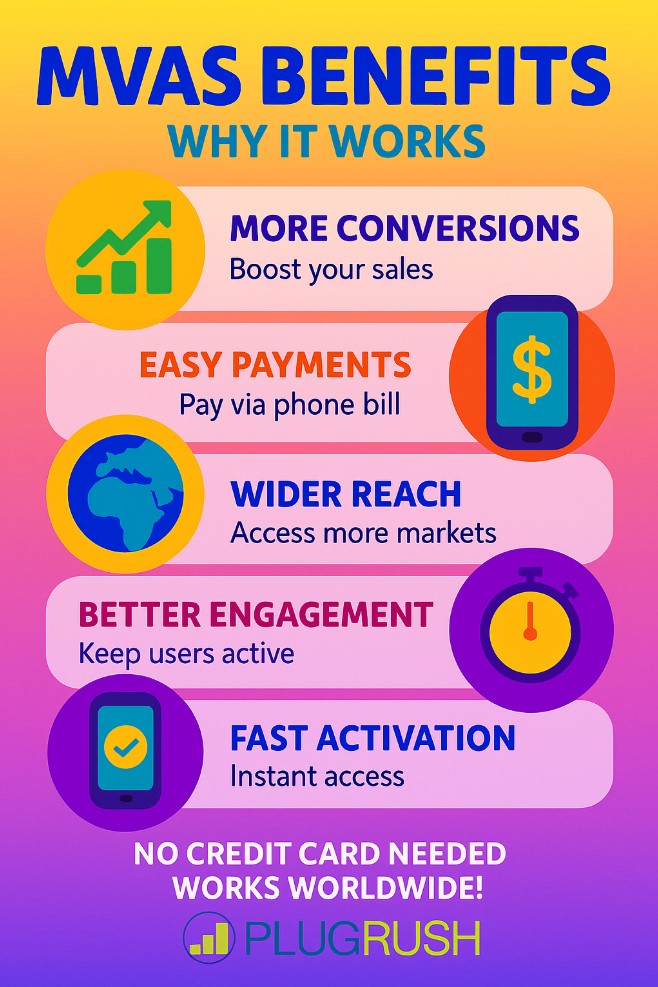
User-Centric Advantages
For users, MVAS provide convenience and personalization. Whether through mobile banking alerts or entertainment options, users enjoy a richer mobile experience catered to their specific needs and interests. This level of customization enhances user loyalty, as individuals value services that save time and provide relevant information.
Challenges and Considerations in Implementing MVAS
Implementing Mobile Value Added Services presents unique challenges. Businesses must navigate these challenges to effectively deploy and fully leverage their potential.
Technical Integration
One major hurdle is the technical integration with existing systems. Ensuring seamless compatibility can be complex, requiring substantial IT resources and expertise.
User Privacy and Trust
User data privacy is another significant concern. MVAS rely on personal user data, making it vital to adhere to strict data protection regulations.
Managing Costs and ROI
Cost management and ensuring a positive return on investment are critical. Implementing MVAS can be resource-intensive, making it necessary to carefully evaluate costs and potential benefits.
Key Implementation Challenges:
- Integration Complexity: Difficulties in aligning with current systems.
- Data Privacy: Adhering to user privacy regulations.
- Cost Management: Balancing investment with potential gains.
Image Highlighting MVAS Challenges
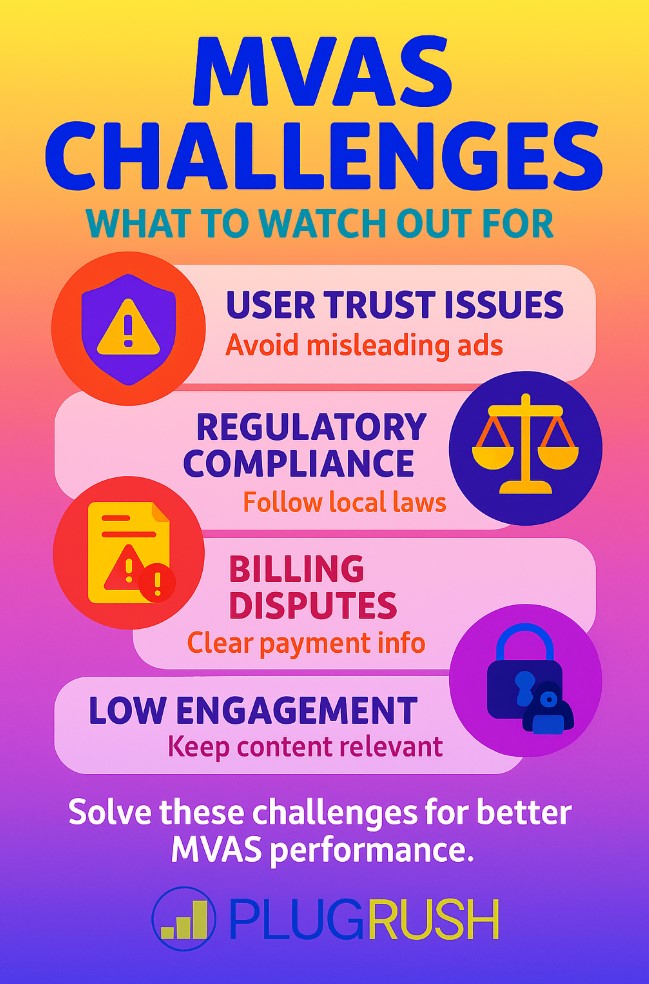
Businesses must also consider the rapidly changing technology landscape. Staying updated with the latest developments in mobile technology is crucial for maintaining a competitive edge in delivering value-added services.
Regulatory Environment and Security in MVAS
Understanding the regulatory landscape is crucial for successful MVAS implementation. Compliance with laws ensures data security and user trust.
Privacy regulations dictate how user data is collected and used. Businesses must adhere to standards like GDPR to protect users’ personal information.
Security is equally essential. Protecting data from breaches involves robust security protocols and continual monitoring.
Key Regulatory and Security Considerations:
- Data Privacy Laws: Adhere to regional data protection regulations.
- Security Protocols: Implement strong security measures.
- Regular Compliance Checks: Stay updated with legal changes.
Regulatory adherence in Mobile VAS is a two-way street. Companies benefit from user trust, while users enjoy secure services. Regular audits and updates are necessary to maintain compliance with evolving laws and technology advancements. Thus, staying informed of regulatory changes is a proactive approach for companies engaging in MVAS, ensuring both security and legal harmony.
Future Trends: AI, 5G, and the Next Generation of MVAS
The future of MVAS is bright, driven by groundbreaking technologies. Artificial intelligence and 5G promise to enhance the scope and efficiency of mobile services.
AI enables highly personalized user experiences. By analyzing user behavior, AI can deliver precise content tailored to individual preferences and needs.
5G, on the other hand, revolutionizes connectivity. It offers faster speeds and lower latency, supporting high-demand applications like virtual reality and IoT.
Emerging Trends in MVAS:
- AI Personalization: Advanced algorithms enhance user engagement.
- 5G Connectivity: Supports complex applications with increased speed.
- Integration with IoT: Offers real-time data and seamless interaction.
These advancements present new opportunities for businesses. By integrating AI and leveraging 5G, companies can offer innovative services that surpass user expectations. Additionally, the combination of AI and IoT widens the possibilities for real-time, immersive experiences. This evolution positions businesses to capitalize on enhanced MVAS, leading to increased customer satisfaction and competitive advantage in the rapidly evolving digital landscape.
How to Get Started with MVAS: A Step-by-Step Guide
Launching MVAS requires strategic planning and execution. Begin by identifying your business goals and target audience. This clarity helps shape your MVAS offerings to meet specific customer needs effectively.
Next, choose the right technology partners. Collaborate with mobile operators and content providers to deliver seamless services. Ensure that your partners align with your business objectives and can support your MVAS vision.
Finally, focus on marketing and customer engagement. Use data-driven insights to tailor promotions and drive adoption. Monitor user feedback to refine and enhance your services continually.
Steps to Implement MVAS:
- Define Objectives: Understand goals and audience needs.
- Select Partners: Choose tech allies for execution.
- Engage Customers: Use insights for targeted marketing.
With these steps, your business can start effectively leveraging MVAS. Adapt to market changes and customer feedback to refine your strategy over time. This continuous improvement approach will help maximize the potential of MVAS in your digital marketing efforts.
Key Metrics to Measure MVAS Success
To gauge the effectiveness of MVAS, it is crucial to track relevant metrics. Start with user engagement levels, as they reflect how well your services resonate with customers. High engagement often indicates valuable and enjoyable experiences for users.
Additionally, monitor conversion rates to assess how effectively your MVAS transforms interest into action. Keep a close eye on customer satisfaction to ensure your services meet user needs.
Important Metrics to Monitor:
- User Engagement: Frequency and duration of use.
- Conversion Rates: Percentage of users taking desired actions.
- Customer Satisfaction: User feedback and ratings.
Analyzing these metrics will provide insights into areas of success and those needing improvement. Regular metric evaluations will ensure your MVAS strategy remains effective and competitive.
Conclusion: Maximizing Value with MVAS in Your Business Strategy
Incorporating MVAS into your business can unlock new growth opportunities. These services offer a way to enhance customer interaction and build stronger relationships. By catering to user preferences, businesses can significantly boost satisfaction and loyalty.
MVAS not only improve engagement but also diversify revenue streams. Leveraging innovative services tailored to your audience ensures you stay competitive in the digital landscape. As technology evolves, keeping ahead by adapting your MVAS strategy is essential.
To succeed, focus on understanding your audience and integrating MVAS seamlessly. This strategic approach will elevate your brand’s presence and drive substantial business value. Embrace MVAS today to secure a brighter future.




